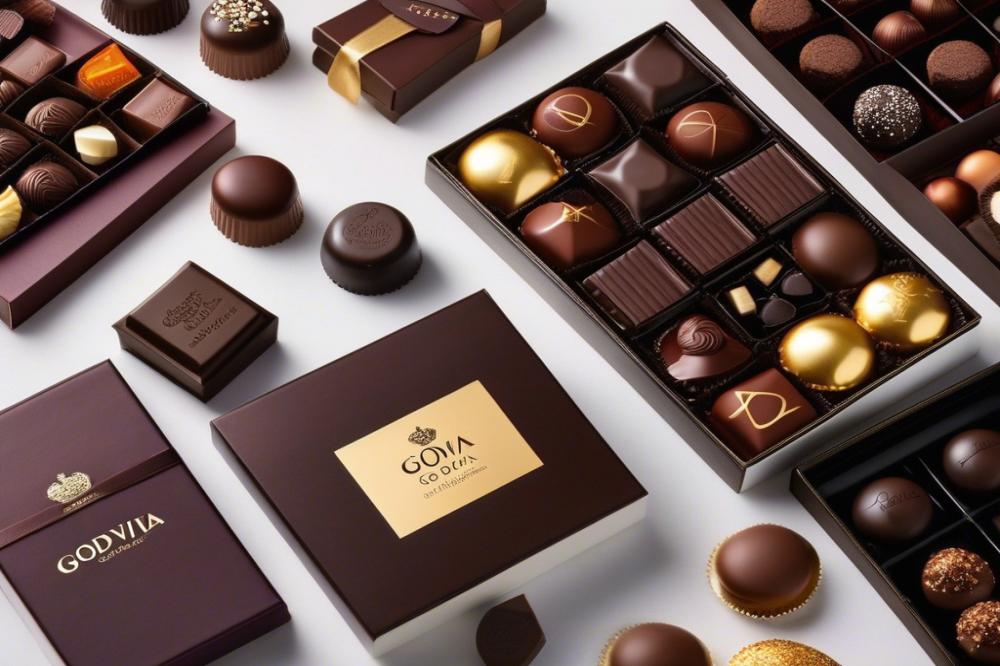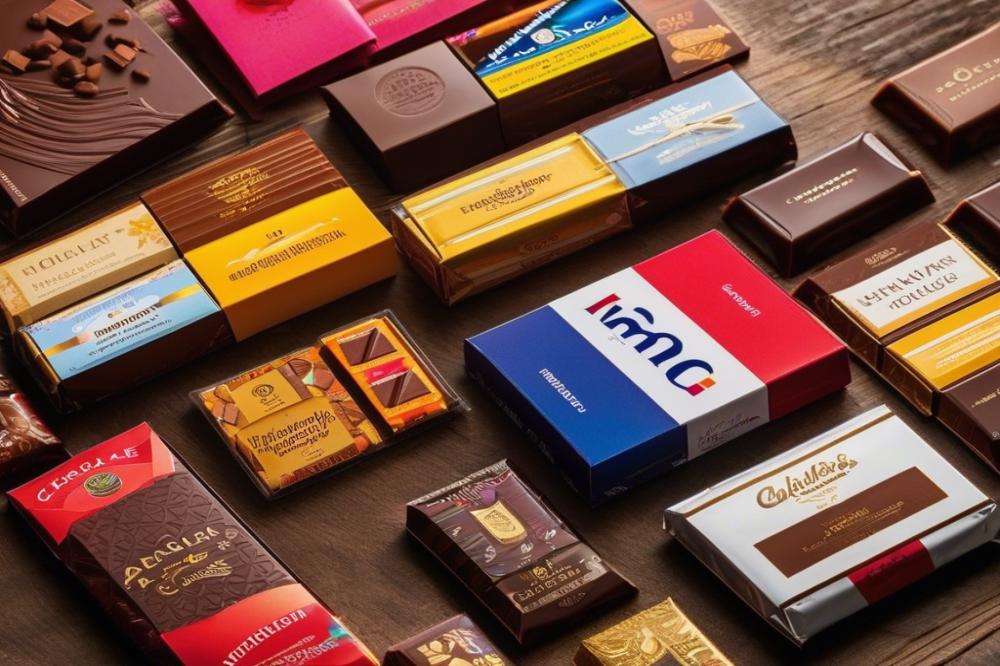The Story Behind Wispa: The Comeback of a Fan-Favorite Chocolate
Wispa chocolate holds a special place in the hearts of many. This confectionery delight, known for its airy texture and rich flavor, has captured the attention of chocolate lovers since its debut. As a signature product under the Cadbury brand, it represents not just a tasty treat but also a piece of candy history. The significance of this bar goes beyond its ingredients; it symbolizes a nostalgic link to the past for many consumers.
During the late 1980s, Wispa became immensely popular in the UK, making waves among chocolate bars at the time. Its light and bubbly interior offered a unique experience that set it apart from other sweets in the market. As consumer demand surged, Cadbury cleverly marketed this chocolate, ensuring its status as a fan-favorite. Yet, in the late 2000s, Wispa ceased production, leading to a considerable outcry from devoted fans. This prompted conversations about brand loyalty, consumer preferences, and the reasons behind its initial discontinuation.
Nostalgia plays a vital role in the chocolate comeback of products like Wispa. Many remember enjoying it as children, sharing it with friends, or discovering it for the first time. Such memories can reignite interest and motivate people to seek out long-cherished products. The sweetness of these recollections often translates into a desire for revival. Fans voiced their wishes loudly on social media, and Cadbury, listening closely, decided to take action.
Today, the story of Wispa continues to evolve. Its return is not merely about a product resurfacing on the shelves; it reflects the growing trend of reintroducing beloved items that resonate emotionally with consumers. Conducting taste tests and gauging public interest became part of the marketing strategy, showcasing how brands can adapt to modern tastes while honoring their roots. Through the revival of this fan-favorite, Cadbury aims to reconnect with consumers on a deeper level.
The Origins of Wispa chocolate

Cadbury, a giant in the world of confectionery, has a rich history that dates back to the 19th century. Founded in 1824 by John Cadbury in Birmingham, England, the brand evolved from a small tea and coffee shop into a leading chocolate manufacturer. In the 1980s, Cadbury introduced a new chocolate bar that would captivate consumers and create a lasting legacy—Wispa.
The initial launch of this candy occurred in 1983. Wispa quickly gained recognition for its distinctive texture and taste. What set it apart from other chocolate bars was its innovative bubbly consistency. This innovative approach appealed to many, drawing in those familiar with the traditional creamy chocolate experience and inviting them to try something new. Wispa’s light and airy nature offered a delightful contrast to the denser products that saturated the market at that time.
Fans often described the chocolate as having a smooth flavor with a hint of sweetness. Its signature bubbles gave it a soft texture, making each bite feel unique. During taste tests, many consumers noted how the lightness of the bar made it less filling, inviting them to enjoy it more frequently. In a market teeming with choices, Wispa’s marketing strategy relied on that unique texture and refreshing flavor profile to create a loyal fan base.
Despite its popularity, the fan-favorite Wispa faced challenges in the early 2000s. Years of changing consumer trends and competition from other chocolate brands led to its decline. Yet, nostalgia never faded among its former fans. This sentimental longing laid the groundwork for a brand revival many years later, as consumers began to express a renewed demand for Wispa in the confectionery niche.
The Fall and Revival of Wispa

The decline of Wispa can be traced back to changing consumer preferences. During the late 1990s, the market experienced shifts in sweets and chocolate bars. Many consumers began to favor newer varieties, drawn by different flavors and health-conscious options. Cadbury struggled to keep up with this evolving trend, causing some classic favorites to lose their spotlight. The company made strategic decisions that did not favor the wispy chocolate that fans adored.
Consumer demand shifted rapidly. As new candy options appeared, Wispa faded from store shelves. nostalgia played a part, as long-time fans remembered its unique texture and taste. However, this sentimental value wasn’t enough to sustain sales. The marketing strategy at the time seemed disconnected from what chocolate lovers wanted. Competition grew fierce, and many creators sought to appeal to health trends. As a result, traditional chocolate bars lost ground.
Passionate supporters voiced their opinions. The fan outcry was loud, with many taking to social media. Petitions circulated, gathering signatures from avid consumers who wanted the return of this beloved treat. Conversations filled with memories began to flood online platforms. Fans shared their experiences and what made this chocolate special. Such expressions of nostalgia highlighted the emotional connection to the brand.
In the wake of this consumer uprising, Cadbury took notice. An understanding grew among management regarding the desire for revival. Fans conducted taste tests, comparing Wispa to competing products. They celebrated every moment of eating Wispa with friends and family. This connection pushed Cadbury to reconsider its decision on the beloved confectionery. The growing discourse around its return illustrated the impact of community and shared love for sweets.
The Marketing Strategy Behind the Comeback
Reviving a fan-favorite like Wispa chocolate was no simple task for Cadbury. They understood that a clever marketing strategy was essential. The company’s approach focused on tapping into nostalgia. Many adults had fond memories of enjoying these chocolate bars in their youth. By evoking past experiences, Cadbury aimed to create a strong emotional connection with consumers.
Nostalgic Marketing and Social Media Campaigns
Nostalgia played a big role in the revival. Cadbury launched campaigns that highlighted the history of Wispa, reminding fans of their childhood joys. Social media acted as a powerful tool in spreading the word. Engaging content, such as taste test videos, created buzz online. In using platforms like Instagram and Twitter, they directly connected with their audience. Fans shared their own memories, further boosting interest in the chocolate.
Impact of Limited Editions and Rebranding Efforts
Limited editions also contributed to the increased consumer demand. These special releases created excitement and urgency. Fans rushed to stores to grab these rare treats, often sparking conversations among friends. Cadbury didn’t just stop at limited offerings. They also worked on rebranding efforts that modernized Wispa while keeping its classic appeal. Updated packaging caught the eye of shoppers, encouraging them to try the product again.
Overall, the blend of nostalgia, social media engagement, and strategic limited editions led to a successful brand revival. Cadbury’s ability to connect with both old and new consumers has reinvigorated interest in this beloved confectionery. Through these efforts, Wispa has firmly made its mark in today’s candy history.
Taste Tests and Consumer Reception
The resurgence of Wispa chocolate sparked numerous taste tests across the country. Enthusiasts eagerly participated, offering their opinions on this beloved confectionery. Brands like Cadbury often depend on such feedback to shape their marketing strategy. Wispa was no exception; its promotional campaign emphasized both nostalgia and excitement.
Results from these taste tests showed a strong preference for Wispa among chocolate lovers. Many participants appreciated the light, airy texture and smooth flavor. Comparisons to other chocolate bars revealed that Wispa has a distinct mouthfeel, setting it apart. Fans remarked on how it brought back memories from childhood, enhancing the overall experience.
Positive consumer reactions highlighted the emotional connection to the brand. Wispa’s comeback is not just about satisfying a craving. It reflects a yearning for simpler times and childhood delights. Feedback indicated that many saw Wispa as a comfort food, especially during challenging times. The desire for familiar brands may have driven its brand revival.
While other chocolates focused on bold flavors or new ingredients, Wispa stayed true to its traditional profile. This decision resonated deeply with its dedicated followers. The crunch and melt-in-mouth experience became a point of conversation among fans. Some even claimed it felt like a hug in candy form.
Ultimately, the combination of nostalgia and taste played a critical role in the product’s acceptance. A significant number of those who took part in taste tests acknowledged they would choose Wispa over other options. This feedback underscores the power of consumer demand in the candy history narrative. Wispa’s journey reveals how connecting with the past can create a bright future for a fan-favorite.
The Future of Wispa Chocolate
Predictions for Wispa’s Place in the Chocolate Market Moving Forward
Wispa has successfully carved its niche in the competitive chocolate industry. Cadbury’s return to the market has reignited interest among older fans and attracted a new generation. Given current trends, the demand for nostalgic products might drive Wispa’s popularity even higher. Consumers are increasingly drawn to brands that tap into emotional connections. Chocolate bars that evoke positive memories often outperform newer options. As Cadbury prioritizes flavor and texture, Wispa is likely to thrive.
Potential Challenges and Opportunities for Cadbury in Maintaining Fan Engagement
Maintaining engagement will not be without its hurdles. Fans may expect constant innovations while craving the familiar taste they love. Balancing tradition with modern marketing strategies is crucial. Appealing to younger audiences can be tricky. Besides offering promotions, Cadbury should consider hosting taste tests to gather feedback. This strategy could develop new flavors or product lines. Engaging directly with consumers fosters loyalty and could generate buzz on social media platforms.
Broader Implications for Brand Revival in the Confectionery Industry
The successful comeback of Wispa reflects a larger trend in candy history. Brands recognizing the power of nostalgia are seeing benefits. Companies that embrace their legacy can rejuvenate interest and sales. Reviving fan-favorites can create waves in the market. It also emphasizes the importance of understanding consumer demand. Many businesses may look to follow Cadbury’s lead. Adapting to consumer preferences will be key for future growth in the confectionery sector.
The Comeback of a Classic
Wispa’s journey from decline to resurgence captures the heart of chocolate lovers everywhere. Once a beloved treat, it faded from shelves, leaving a gap filled by newer brands. However, the call of nostalgia from fans brought it back to life. People remembered the distinctive texture and flavor, which resonated deeply with many.
Cadbury recognized this shift in consumer sentiment. Understanding the demand for nostalgic products, they made a strategic decision to revive Wispa. This move proved to be a thoughtful response to the emotional ties that many customers had with the chocolate bar. The revival not only filled the requests of longing fans but also sparked a wave of interest in classic products from the past.
Market trends often emphasize the significance of memories connected to food and drink. Wispa’s comeback illustrates how nostalgia can drive consumer behavior and influence brand success. Fans feel a sense of connection to the past, encapsulated in each bite. It also shows the power of listening to loyal customers. When companies pay attention, they uncover invaluable insights about what people truly want.
Ultimately, Wispa’s story impacts the chocolate bar landscape significantly. It encourages other brands to reflect on their heritage and the memories they create. As nostalgia continues to shape purchasing decisions, it offers a unique lesson in the world of marketing. The Wispa revival serves as a reminder that the past can indeed have a place in today’s marketplace. Embracing history while adapting to the present may be the key to future successes for many brands, not just in chocolate but across various industries.



